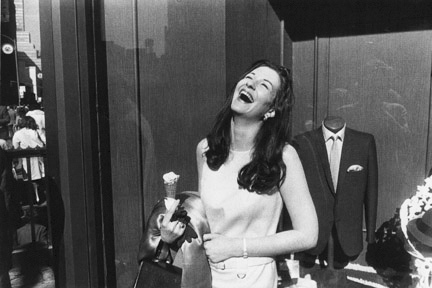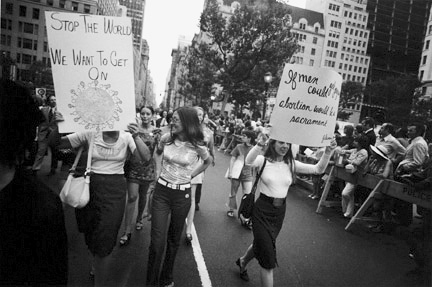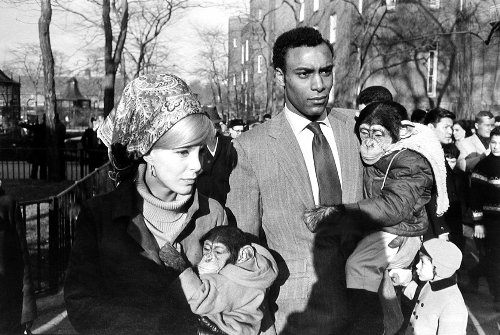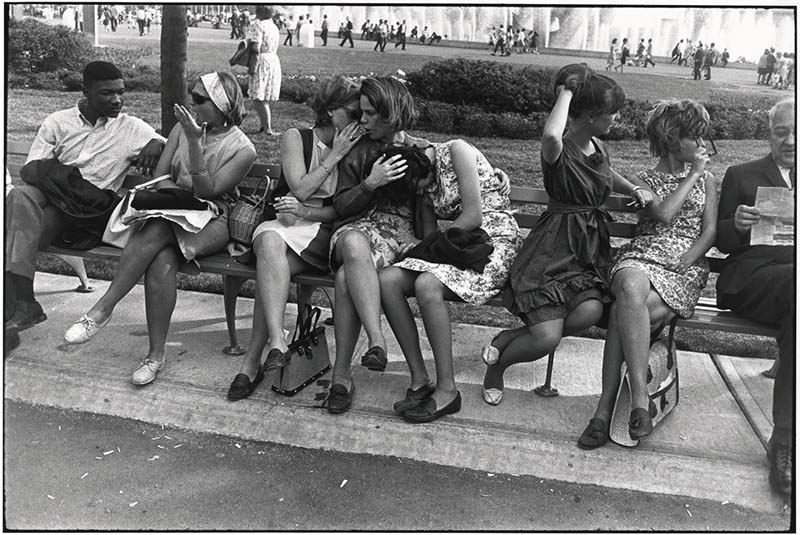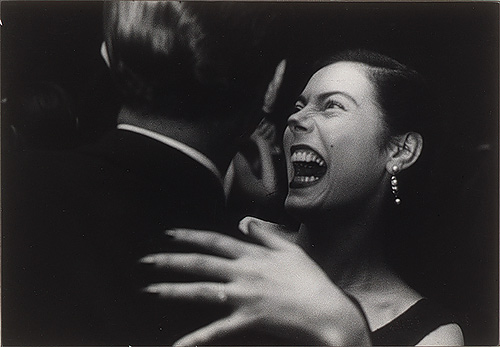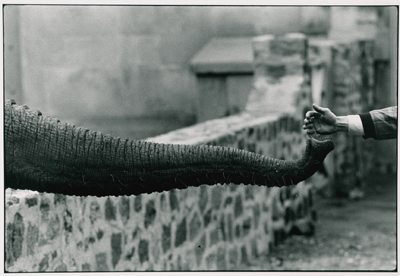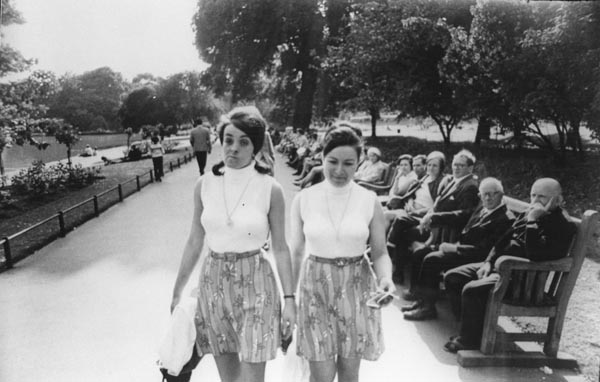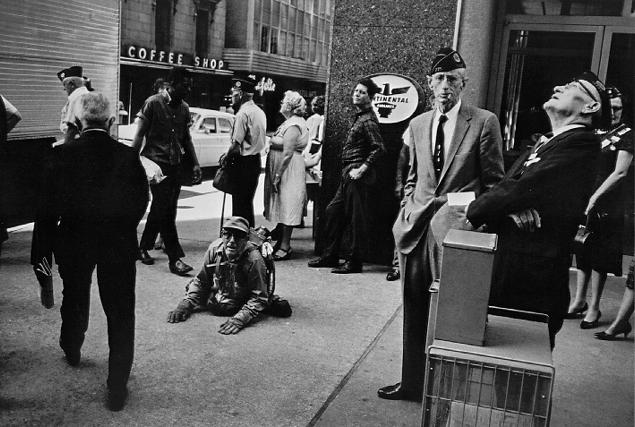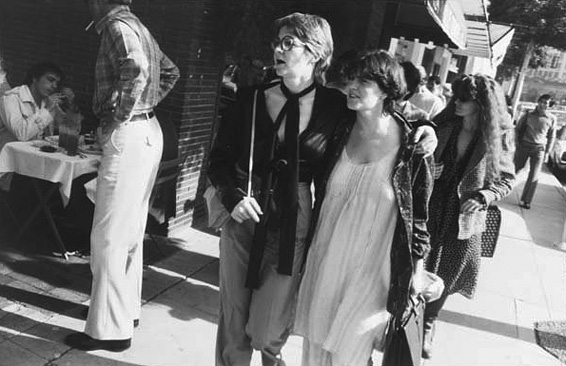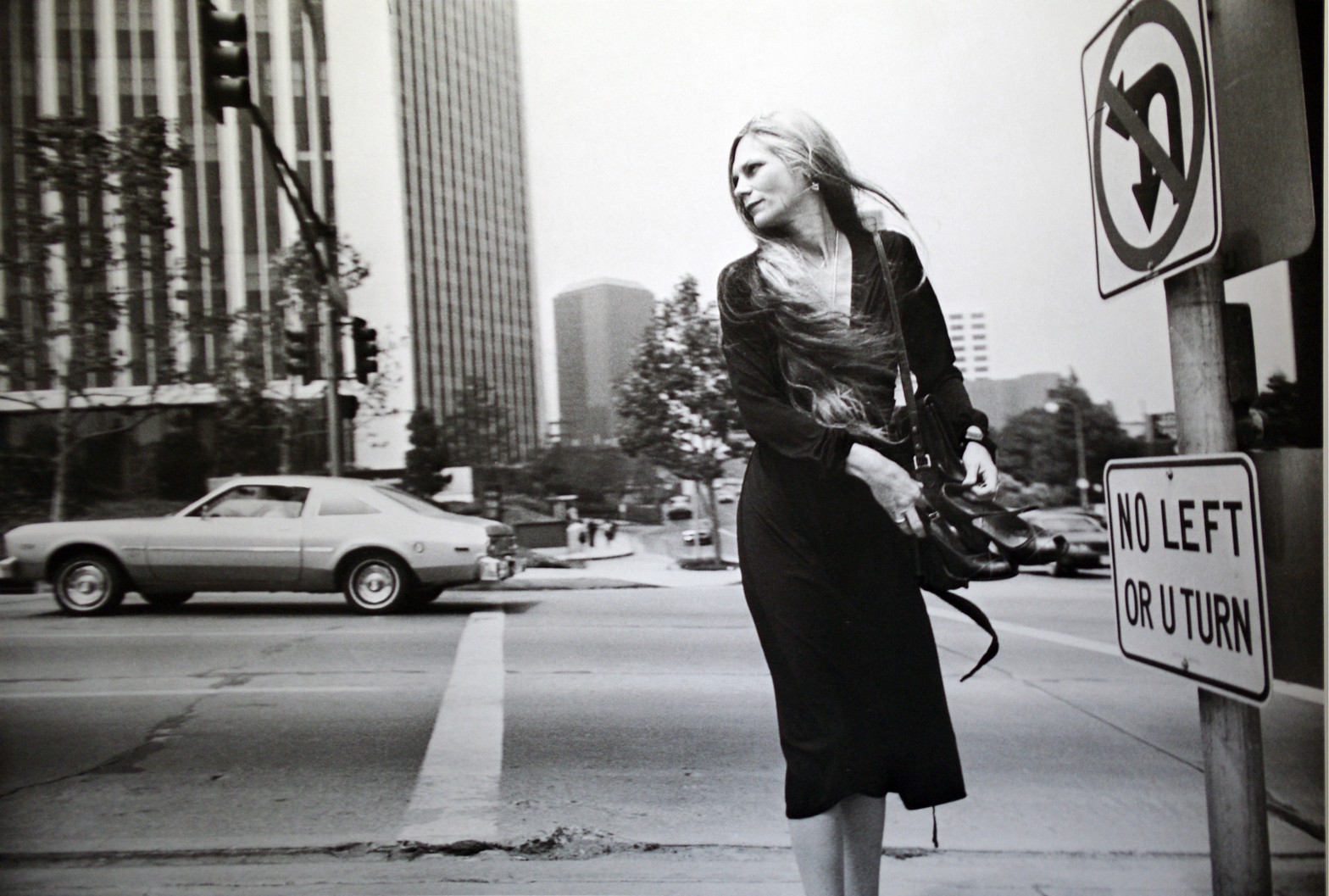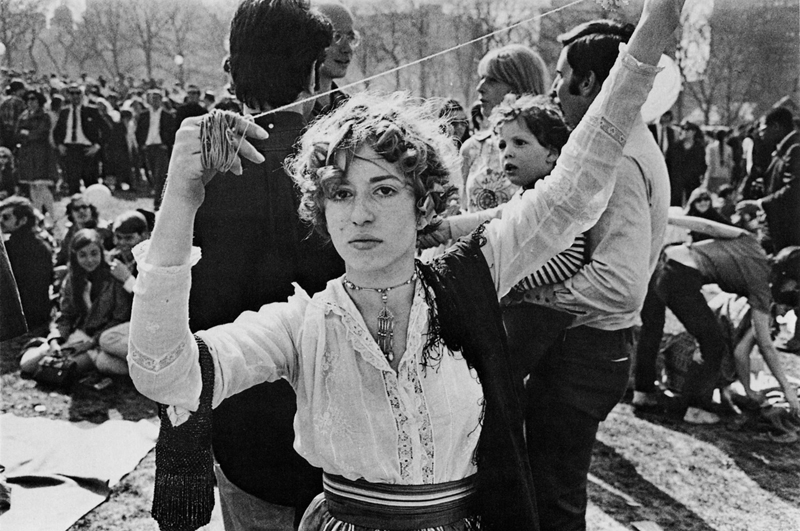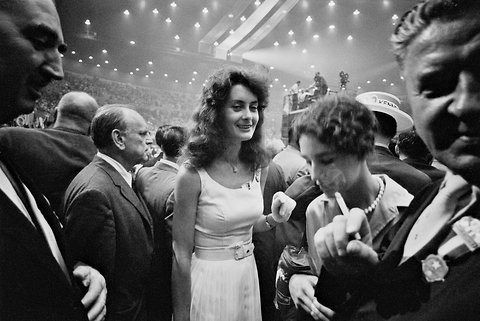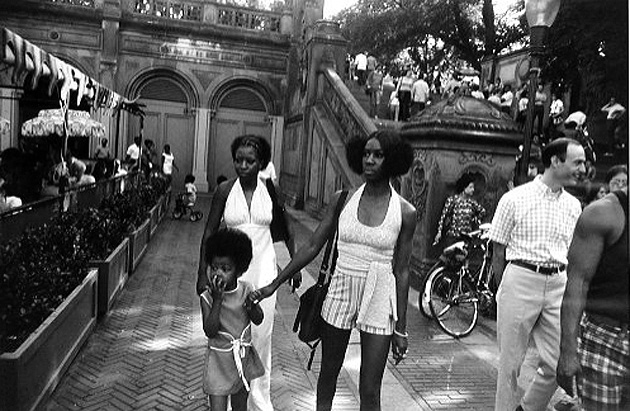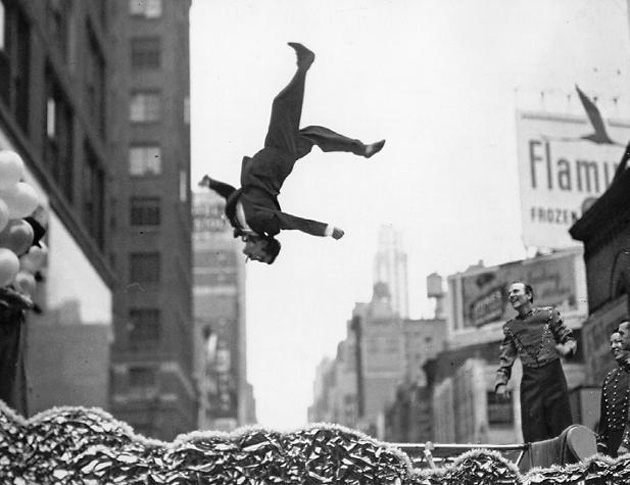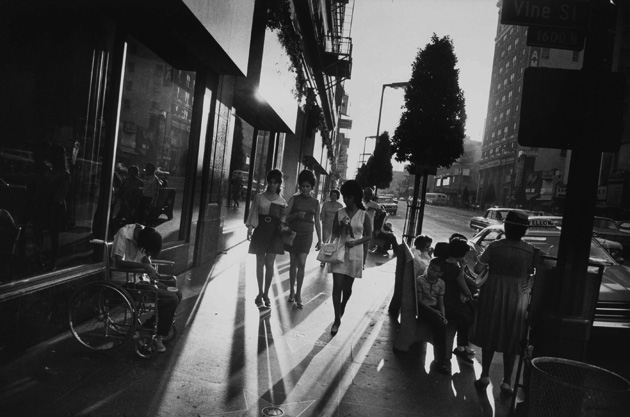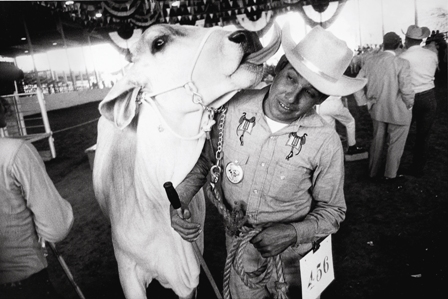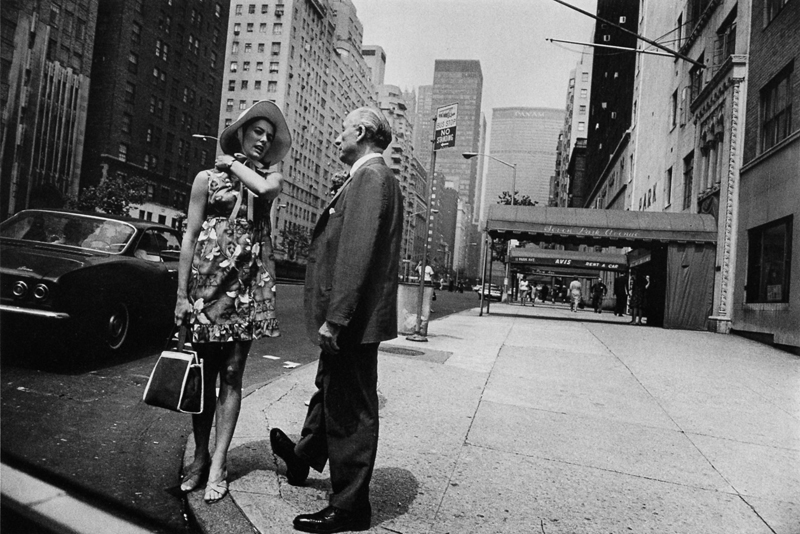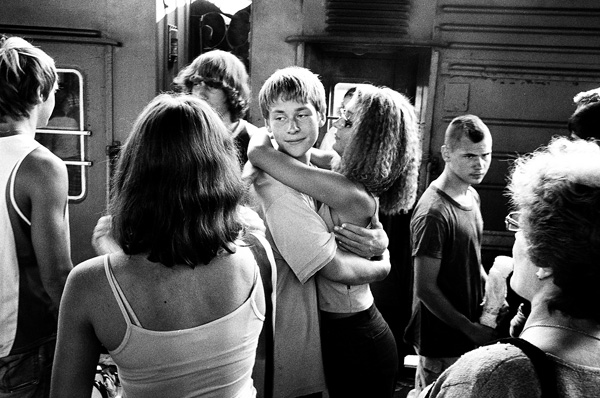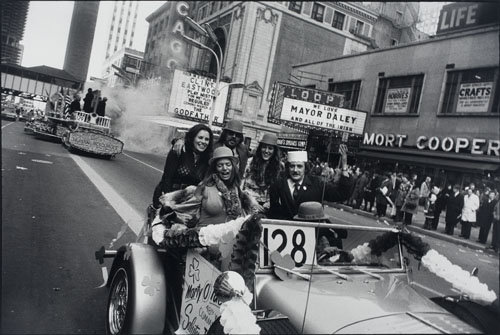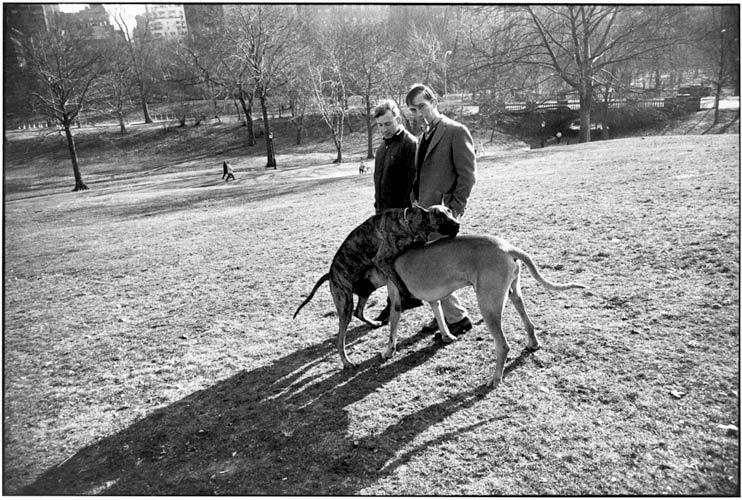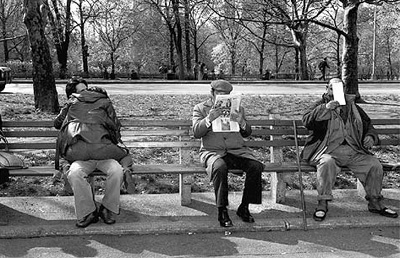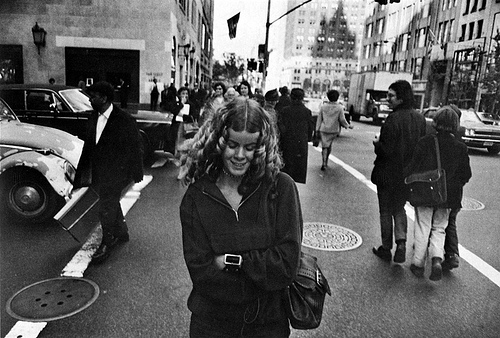<Back to Index>
- Photographer Garry Winogrand, 1928
PAGE SPONSOR
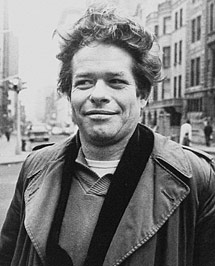
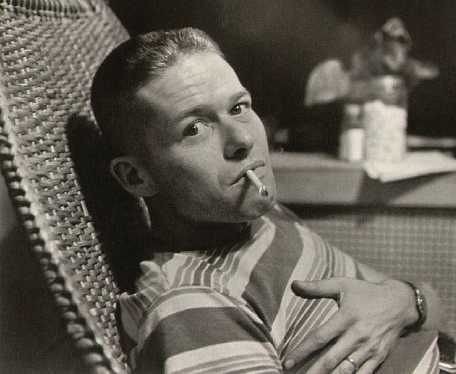
Garry Winogrand (14 January 1928, New York City – 19 March 1984, Tijuana, Mexico) was a street photographer known for his portrayal of America in the mid 20th century. John Szarkowski called him the central photographer of his generation.
Winogrand was influenced by Walker Evans and Robert Frank and their respective publications American Photographs and The Americans. Henri Cartier - Bresson was another influence although stylistically different.
Winogrand was known for his portrayal of American life in the early 1960s. Many of his photographs depict the social issues of his time and in the role of media in shaping attitudes. He roamed the streets of New York with his 35mm Leica camera rapidly taking photographs using a prefocused wide angle lens. His pictures frequently appeared as if they were driven by the energy of the events he was witnessing.
Winogrand's photographs of the Bronx Zoo and the Coney Island Aquarium made up his first book The Animals (1969), a collection of pictures that observes the connections between humans and animals. His book Public Relations (1977) shows press conferences with deer - in - the - headlight writers and politicians, protesters beaten by cops, and museum parties frequented by the self - satisfied cultural glitterati. These photographs capture the evolution of a uniquely 20th and 21st century phenomenon, the event created to be documented. In Stock Photographs (1980), Winogrand published his views of the Fort Worth Fat Stock Show and Rodeo.
At the time of his death there was discovered about 2,500 rolls of undeveloped film, 6,500 rolls of developed but not proofed exposures, and contact sheets made from about 3,000 rolls. The Garry Winogrand Archive at the Center for Creative Photography (CCP) comprises over 20,000 fine and work prints, 20,000 contact sheets, 100,000 negatives and 30,500 35mm color slides as well as a small group of Polaroid prints and several amateur motion picture films.
Winogrand grew up in the then predominantly Jewish working class area of the Bronx, New York, where his father, Abraham, was a leather worker, and his mother, Bertha, made neckties for piecemeal work.
Winogrand studied painting at City College of New York and painting and photography at Columbia University in New York City in 1948. He also attended a photojournalism class taught by Alexey Brodovich at The New School for Social Research in New York City in 1951.
In the early 1960s Winogrand photographed on the streets of New York City alongside Joel Meyerowitz, Lee Friedlander, Tod Papageorge and Diane Arbus.
In 1955 two of Winogrand’s photos appeared in The Family of Man exhibition at the Museum of Modern Art (MoMA), New York. Winogrand's first one - man show was held at Image Gallery in New York City in 1959. His first notable appearance was in Five Unrelated Photographers in 1963, also at MoMA in New York City, along with Minor White, George Krause, Jerome Liebling and Ken Heyman. In 1966 Winogrand exhibited at the George Eastman House in Rochester, New York with Lee Friedlander, Duane Michals, Bruce Davidson and Danny Lyon in an exhibition entitled Toward a Social Landscape. In 1967 he participated in the New Documents show at MoMA in New York City with Diane Arbus and Lee Friedlander, curated by John Szarkowski.
John Szarkowski, the Director of Photography at New York's Museum of Modern Art, became an editor and reviewer of Winogrand's work. Szarkowski called him the central photographer of his generation.
In 1964 Winogrand was awarded a Guggenheim Fellowship Award to travel through America. Some of the results of this work were shown in the New Documents exhibition. He was awarded his second Guggenheim Fellowship in 1969 to continue exploring media events and their effect on the public. Between 1969 and 1976 Winogrand shot about 700 rolls of film at public events, producing 6,500 eleven by fourteen inch prints for Tod Papageorge to select for the exhibition and book Public Relations. Winogrand received a National Endowment for the Arts Fellowship in 1975. In 1979 with his third Guggenheim Fellowship he moved to Los Angeles to document California. While in LA he developed 8522 rolls of film.
Winogrand worked as a commercial photographer between 1952 and 1954 at the Pix Photo Agency in Manhattan and from 1954 at Brackman Associates.
Between 1971 and 1972 Winogrand taught photography at the Institute of Design, Illinois Institute of Technology in Chicago and between 1973 and 1978 at the University of Texas in Austin.
In 1952 Winogrand married Adrienne Lebow, separating in 1963 and divorcing in 1966, they had two children, Laurie and Ethan. Around 1967 Winogrand married his second wife Judy Teller, they were together until 1969. In 1972 he married Eileen Adele Hale, with whom he had a daughter, Melissa.
Winogrand died of gall bladder
cancer, in 1984 at age 56. As evidence of his prolific
nature, Winogrand left behind nearly 300,000 unedited
images. Some of these images have been exhibited
posthumously, and published by MoMA in the overview of his
work Winogrand, Figments from the Real World.
